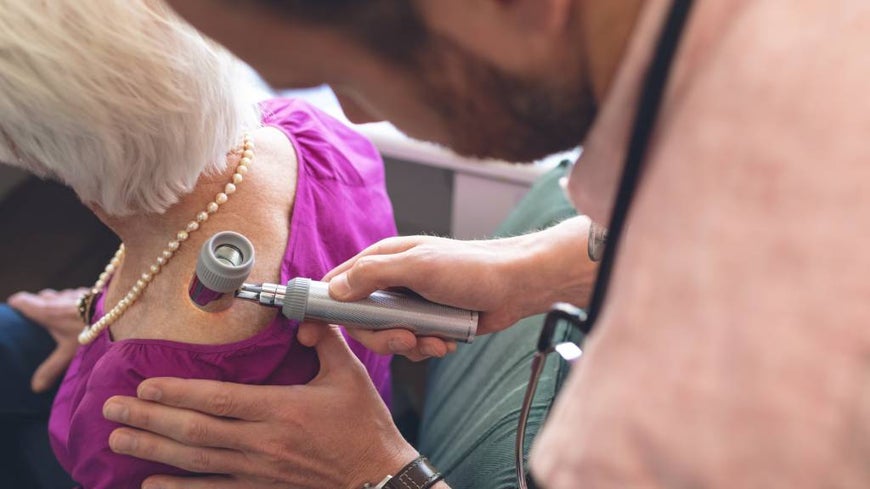Top 5 things to know about melanoma

Helen Foster interview Professor Richard Scolyer from the Melanoma Institute Australia for Seniors Health Insurance
Australia has the highest melanoma rates in the world, and incidence increases with age. Co-medical director of Melanoma Institute Australia, Professor Richard Scolyer, who was named joint 2024 Australian of the Year for his pioneering work in treating melanoma, pinpoints five things we all need to know about the skin cancer.
1. What is melanoma?
It’s a cancer that forms in melanocytes, the pigment-producing cells in the skin. They usually present as marks on the skin and can be black, brown, pink or even skin-coloured.
If a melanoma is caught early, there’s a high chance it can be cured, but a melanoma that has a vertical depth of even just a millimetre is more likely to spread elsewhere in the body (metastasise), which is when they become problematic; other cancers of that size would likely be completely curable.
2. What causes melanoma?
The majority of melanomas are caused by sunlight exposure. UV rays penetrate through the superficial part of the skin and damage the DNA of the melanocytes.
Paler skin types are more vulnerable to damage, as the darker your skin, the more melanin you have to absorb UV and so less damage occurs to the cells – but people with darker skin can still be affected. There can also be a family history of melanomas.
3. What are the signs of melanoma?
About a third of melanomas develop from an existing mole, so be aware of any changes and use ABCDE to assess those that might be concerning – A means asymmetry, B is for border irregularities, C is for colour differences, D is for diameter, as larger lesions are more concerning, and E is for evolution, if a mole is new or changing.
As we can’t always see every part of our body, it’s also worth getting a partner, family member or health professional to check your skin regularly.
4. Is melanoma treatable?
According to the Melanoma Institute Australia, about 90% of patients will be cured by early diagnosis and surgical removal. We have a very high cure rate because we are so good at early detection.
If a melanoma metastasises, treatment is harder, but things have improved. Fifteen years ago, less than 5% of people with a melanoma that had spread were alive five years later – that’s now more than 55%. This is thanks to treatment innovations like immunotherapy, which triggers the immune system to attack the cancer, many of which were developed in Australia.
5. Do older people still need skin protection?
Yes, we don’t know how long it takes melanoma to develop, so the damage is not necessarily done earlier in life; the less UV that reaches the skin, the lower your risk at any age. Don’t be overly concerned, still get out and enjoy life, but be sensible about protection. Wear broad-brimmed hats, sunglasses and longer clothing, use sunscreen on areas you can’t cover with clothes and seek shade.
Look after your skin, and your health
Whether it’s protecting your skin from the sun or just general looking after health, make sure you have a plan in place for unexpected medical costs. Consider Seniors Health Insurance.
26 Mar 2024